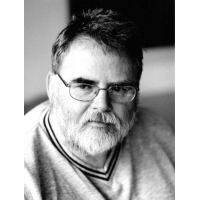Artist brings science into focus

A Lancashire photographer is set to show science in a new light thanks to a new art residency programme at Lancaster University.
As part of Lancaster University’s 40th Anniversary celebrations artist Paul Kenny will work on a year-long science/art residency. During his time at the university the artist will use science as his inspiration to explore place and scale associated with flows of water in the landscape
The project, which has been funded both by the University and the Friends of Lancaster University, will see the photographer giving a series of talks and workshops. He is also interested in developing links between art and science as widely as possible in the University.
At the end of the project, the work produced will be exhibited in the Peter Scott Gallery.
Mr Kenny –an artist/photographer who has his home and studio at Churchtown near Garstang - was proposed by Director of the University’s Peter Scott Gallery Mary Gavagan and Professor Keith Beven of Lancaster University’s Environmental Science department.
Mr Kenny said he was looking forward to exploring the parallels between art and science.
He said: “Whilst discussing my work with scientists I am struck by the similarities between us not the differences. They too are often trying to express multi-layered complex issues as a simple equation or “truth”. I, like them, only arrive at a satisfactory piece of work after conducting rigorous experiments and following many blind alleys.”
Mr Kenny has developed his work in landscape images for more than 30 years and has had 14 solo exhibitions and contributed to many more group exhibitions. His work is held by many public and private collectors including a major acquisition by the Scottish National Photographic Collection.
He said: “My work may appear simple but contains complex issues of beauty, fragility, links between micro and macro, warnings about man’s effect on the landscape, homages to other artists with similar concerns, shapes, textures, the power of nature, mans place on the earth and the earth’s place in the universe.
“Although the quality of experience may be enhanced by access to, and knowledge of, my total body of work, it should be possible to glean layers of meaning from one image. For me that’s what art is, complex thoughts about the world around me, expressed in a visual language.”
Mary Gavagan said the residency built on a strong tradition of partnerships between art and science at Lancaster University.
She said: “The residency is particularly appropriate this year which marks the centenary of the Irene Manton collection which is held in the Peter Scot Gallery. Eminent scientist Professor Irene Manton FRS (1904-1988) was an Honorary Research Fellow in Electron Microscopy at Lancaster University. She had a strong interest in visual art, and over the years built up a diverse collection of prints and paintings by artists from across the globe.”
Professor Beven said: “I have admired Paul’s work for a long time. He has a way of capturing some elements of the environment and revealing them from a new perspective. The sense of experiment that pervades the construction of images in his work will make his response to the work of scientists at the University particularly interesting”.
His work may be viewed at www.paul-kenny.co.uk.